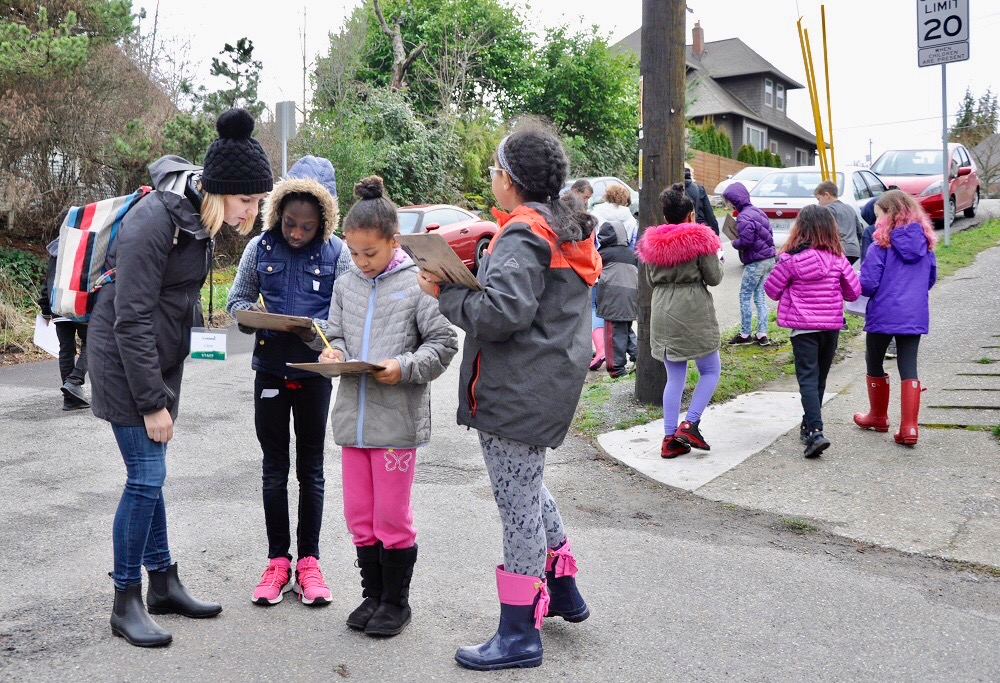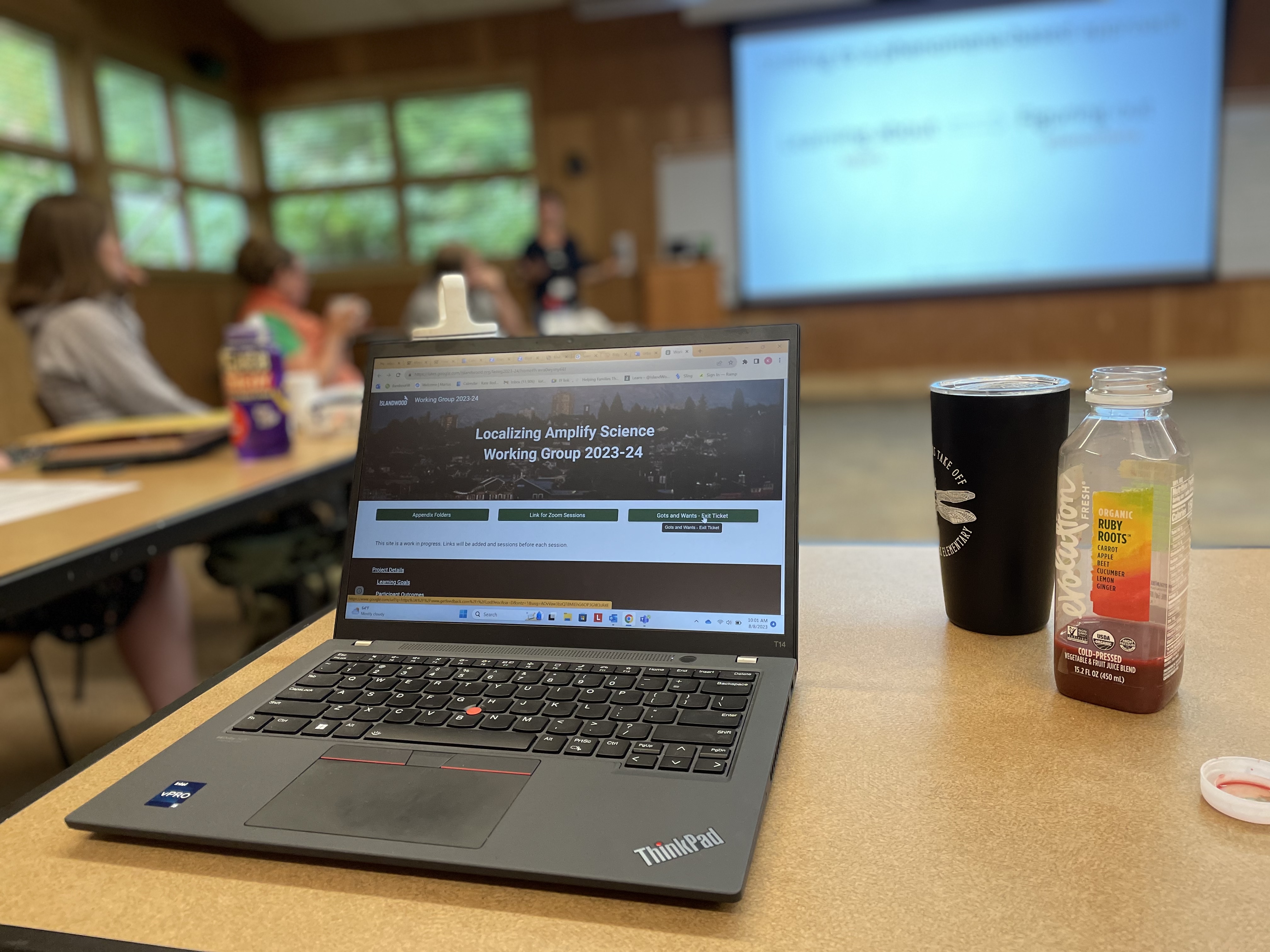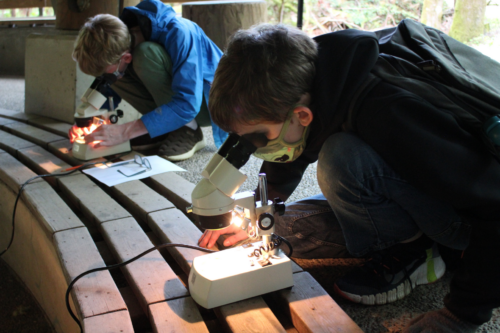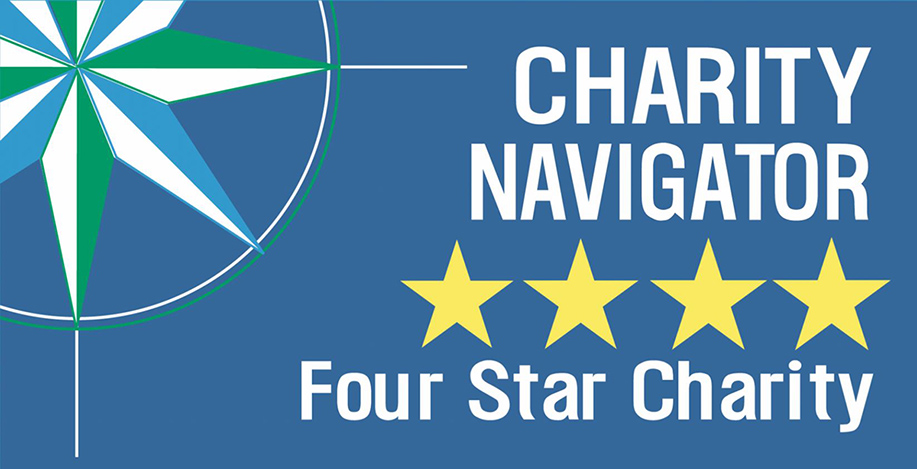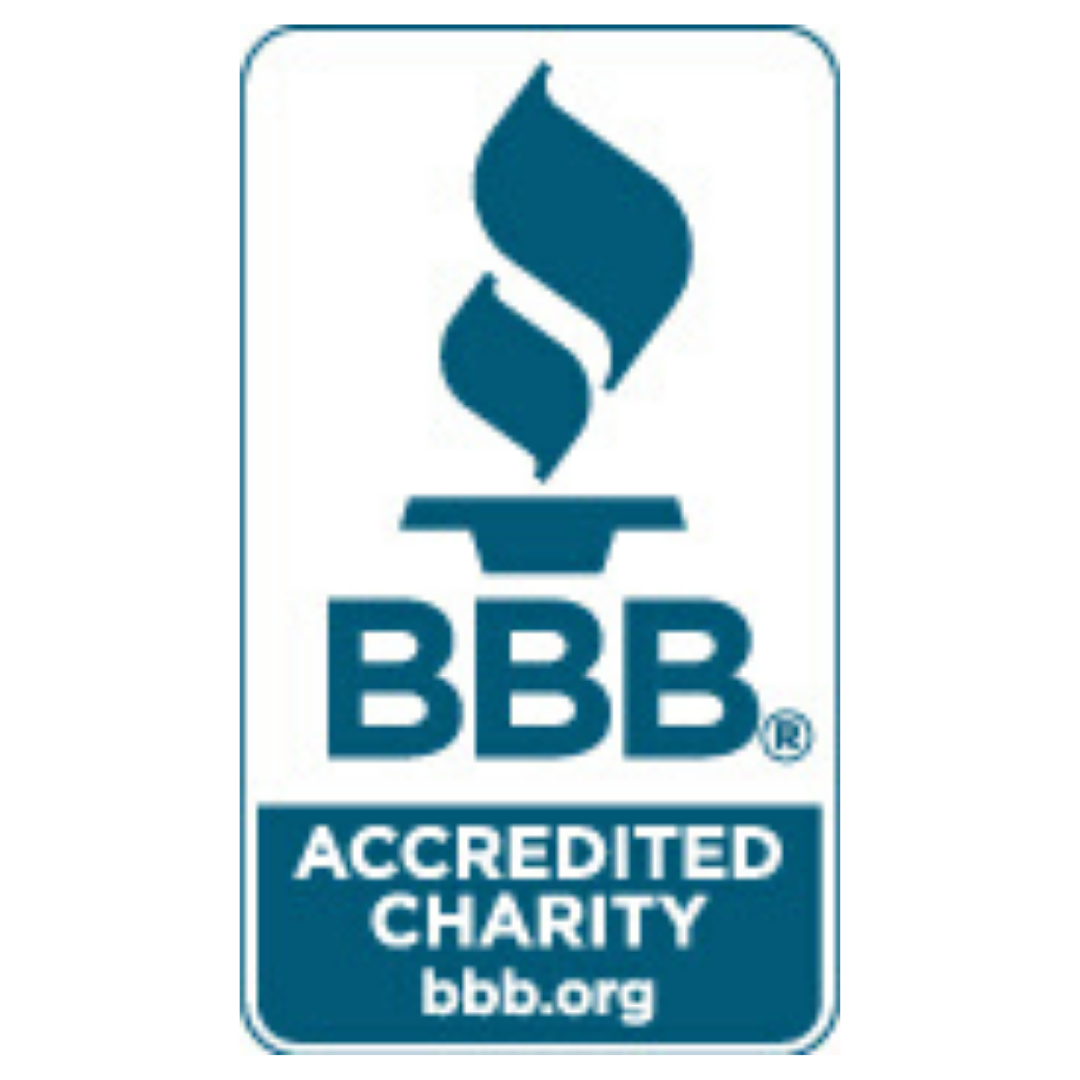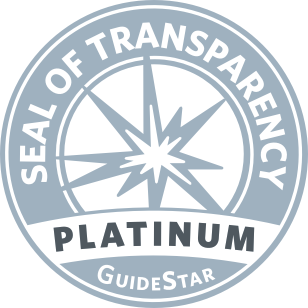Our work with teachers is critical in broadening our reach in the region.
We believe that understanding, honoring, and leveraging the personal and cultural identities of students is very important to students’ science learning. Brad Street, Senior Manager of IslandWood’s Teacher Professional Development work, shares more on the approach below.
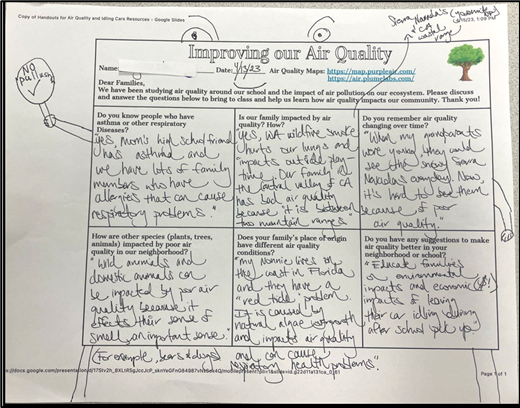
A student’s notes from interviewing a family member about air quality in their school and community.
Why is it important for educators to honor and incorporate their students’ personal and cultural identities into their science learning?
Because students need to see that science is relevant to themselves and their identities. Seeing that connection is much easier for privileged students from the dominant culture since white, male scientists have been the ones our society expects to ask the questions and do the science to understand them. As noted in A Framework for K- 12 Science Education, “Instruction that builds on prior interest and identity is likely to be as important as instruction that builds on knowledge alone. All students can profit from this approach, but the benefits are particularly salient for those who would feel disenfranchised or disconnected from science should instruction neglect their personal inclinations.”
STEM Teaching Tool Practice Brief #42: Using Phenomena in NGSS-Designed Lessons and Units also provides similar direction, “The most powerful phenomena from an educational perspective are culturally or personally relevant or consequential to students. [They] highlight how science ideas help us explain aspects of real-world contexts that matter to students, their communities, and society.”
We also believe that involving students families and elders in the community, and having students connect with them around science knowledge, is important to student learning. Why?
We know that so much learning and science happens outside of the classroom and families are often the center of student experiences, sense of community, and cultural identity. Families also have expertise and knowledge about the world and their communities that we can tap into and learn from. We often work on rethinking who is an “expert” in a community and the value of what they can share. We also try to expand beyond “families” to include a wider multi-generational lens since there are students who don’t have a traditional “family” to turn to, have limited opportunities to interview, or otherwise do lessons with their them, or otherwise have elders in their life who are impacting these things.
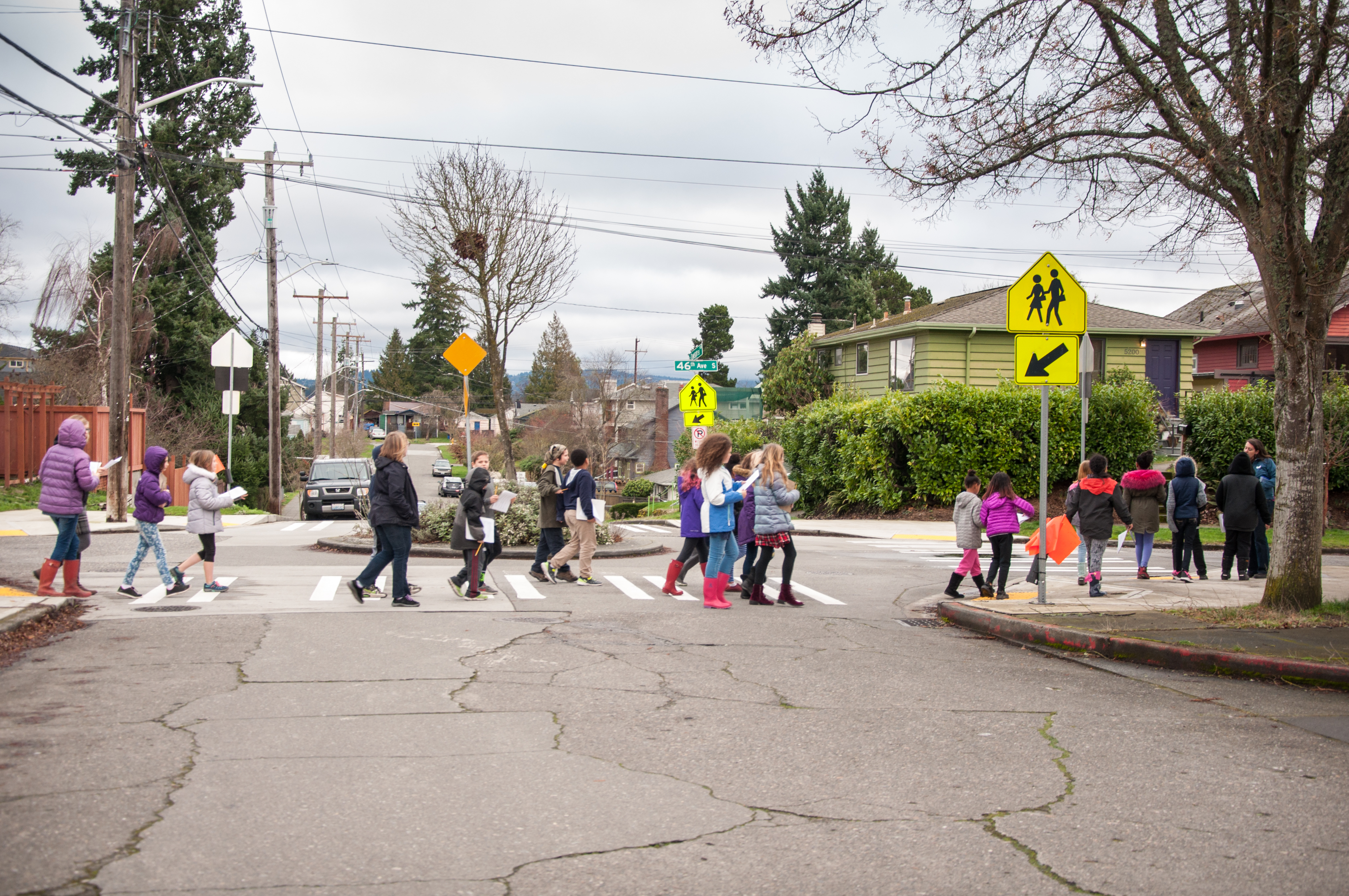
A group of students on a neighborhood walk.
Why does involving family connections tend to increase student engagement in science learning, and learning in general?
Because science becomes more meaningful, feels more authentic, and less abstract. It opens up other ways of knowing that may be more relevant to students, and also, including families means families can support the learning!
Involving family connections in learning has been named a justice-oriented teaching practice. Why is that?
Western science has historically been the domain of white males and has, at times, reinforced and perpetuated injustice. The expertise in families and communities has often been discounted or not recognized. Those who are the least likely to see science as relevant to their lives are also those furthest from justice. When we involve families and acknowledge and elevate their knowledge — and when we make science learning explicitly connected to kids’ own communities — we bring equity and justice to the learning.
What has involving families in science learning looked like in IslandWood’s teacher professional development work?
Two examples of this are home and elder interviews and neighborhood walks.
Home and elder interviews are often set up where a student asks some specific topical questions of an adult in their life and is then asked questions in return. What they learn is then shared back in their classroom and provides their teacher with the opportunity to relate learning to student’s experiences – which is proven to make learning more interesting and with more staying power for students. Sometimes teachers will also ask adults that students have interviewed to come in and share things with the class, which provides another level of learning and an often unique and memorable experience for students.
Neighborhood walks provide opportunities for students to make observations and take note of related phenomena in their own community and think about them with someone who also lives there. Again, making the learning relatable to students’ own lives is a powerful way to pique interest and engagement in the learning.
We also talk with teachers about a shift in perception from seeing families as lacking expertise and not providing needed learning experiences to their children to seeing families as sources of knowledge and experiences in their children’s lives. Schools and families are both a part of a larger context of learning that continues throughout people’s lives. For this work, we have used a resource from Learning in Places called the Family & Community Framework for Engagement and Collaboration. For all the educators out there, I highly recommend it!
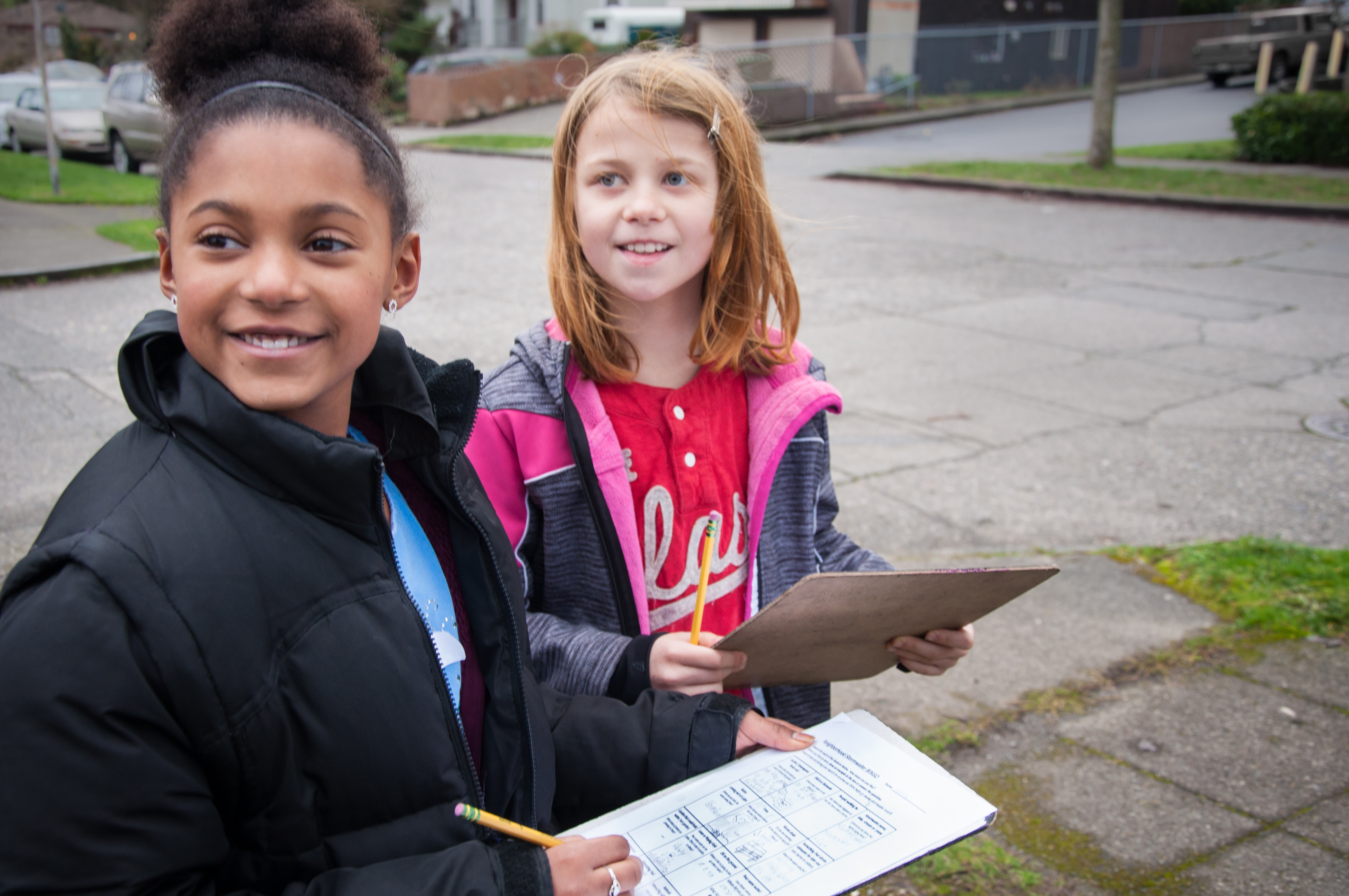
What is the feedback you’ve heard from teachers around this approach?
Teachers have often named the family connections piece as the most impactful element of their IslandWood course and one they want to be sure to carry forward. More than one has said that it hadn’t occurred to them to make it a part of their science teaching and that they intend to keep doing it.
Learn more about upcoming IslandWood professional development opportunities here and sign up for our email list here!

